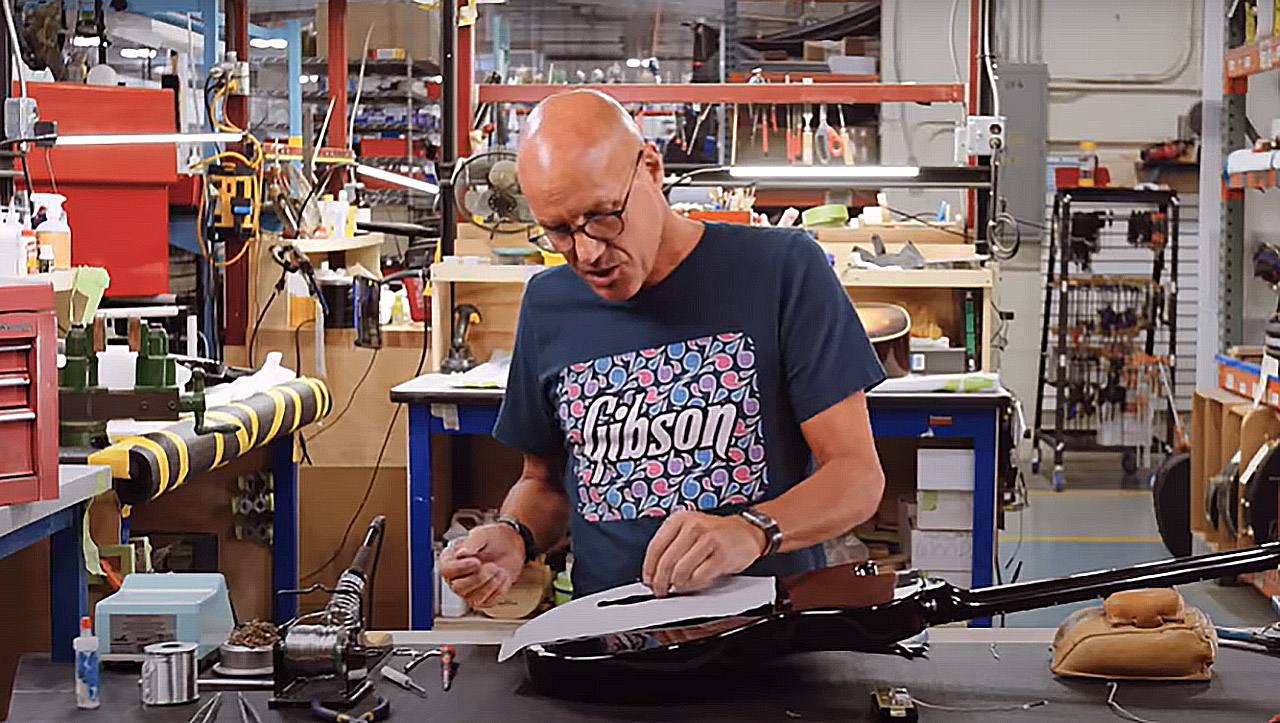Watch Jim DeCola’s complete step-by-step guide to installing a P-90 pickup, featuring a short soldering tutorial
Do you love your electric guitar but want to experiment with its tone by installing a different flavor of P-90 pickup? In this episode of “Gibson’s Guide to Guitar Setup and Maintenance,” Gibson’s Master Luthier Jim DeCola shows you step-by-step how to install a P-90 Dogear pickup in an electric guitar in order to perfect your sound.
For the purposes of this tutorial, Jim uses a Gibson Les Paul™ Junior but over the years, P-90s have appeared on every type of electric guitar and have been heard in every music genre. Watch as Jim shows you how to unsolder a P-90 pickup, explains the difference between Alnico 2 and Alnico 5 magnets, and provides expert tips on soldering a new pickup in your guitar, such as the best type of solder to use.
If you want to know the best and safest way to install a new P-90 pickup or if you have ever wondered how to remove a P-90 pickup, this is the tutorial video for you.
Should I change my electric guitar’s pickups?
Changing the pickups on an electric guitar is one of the most effective ways to alter its tone without modifying its fundamental structure. Pickups are pivotal in shaping a guitar’s sound, translating string vibrations into electrical signals. Different types of pickups can drastically change a guitar’s audio character, but you knew that!
For instance, switching from a single-coil to a humbucker might produce a warmer, richer sound with more resistance to hum and interference—ideal for genres in which high-gain tones are used, such as hard rock and metal. Pickup swapping is a relatively straightforward modification that allows guitarists to customize an instrument’s output to suit their musical style or the demands of a particular performance, giving them more creative control over the tone.
How do P-90s compare to other pickups?
The Gibson P-90 is the standard in single-coil pickups. Long after Gibson unveiled the humbucker, guitarists continue to choose the unique tones only offered by a genuine Gibson P-90—now available from the Gibson Pickup Shop in full-range under-wound and noise-canceling flavors with Dogear and Soapbar covers.
Invented in 1946, the P-90 stands apart from other single-coil designs in several key ways, most notably in tone. A glorious blend of richness, warmth, clarity, and bite, this unique sound profile is due to the P-90’s higher output and wider magnetic structure. This construction results in a less sharp and thin sound than that of other single-coil designs but offers more clarity and focus than a humbucker—more or less.

P-90s typically deliver a ferocious snarl when driven hard, which makes them a favorite of punk, indie, and rock musicians looking for aggressive rhythm tones. There’s plenty here for blues soloists too; thanks to their incredibly expressive and touch-sensitive dynamic response, P-90s respond exceptionally well to adjustments in playing attack—cleaning up beautifully when played softly, yet capable of fireworks when you dig in hard.
Moreover, the sonic signature of the P-90 is also characterized by its harmonically rich, vocal midrange, which helps it cut through a band mix with considerable body and presence. This contrasts with the “scooped” voicing of many other single-coil pickup designs.
Why are guitarists obsessed with chasing tone?
Guitarists, and electric guitarists in particular, chase tone for a variety of reasons. Usually, it’s because they are trying to pin down the elusive holy grail tone in their head, or they want to sound like one of their heroes. Or perhaps they are simply looking for new sounds and textures to provide creative inspiration. Finding the perfect tone is a deeply personal pursuit that reflects one’s style and influences. Lzzy Hale needs one thing, Jimmy Page another (and sometimes he needs two necks and four pickups).
In addition to buying new guitars, amplifiers, and pedals, the quest for tone manifests itself through countless hours of tweaking gear, from adjusting amp settings to experimenting with different strings, pickups, and picks. Never forget those pesky little triangular objects and their impact on tone. Or, you can go wild and ignore picks altogether like Gibson Brand Ambassador Jared James Nichols, a man who knows a thing or two about killer P-90 tone.
To find your sound, visit the Gibson Pickup Shop, always keep fresh strings handy to get the most out of your new pickups and, if you can be tempted, stock up on picks.

